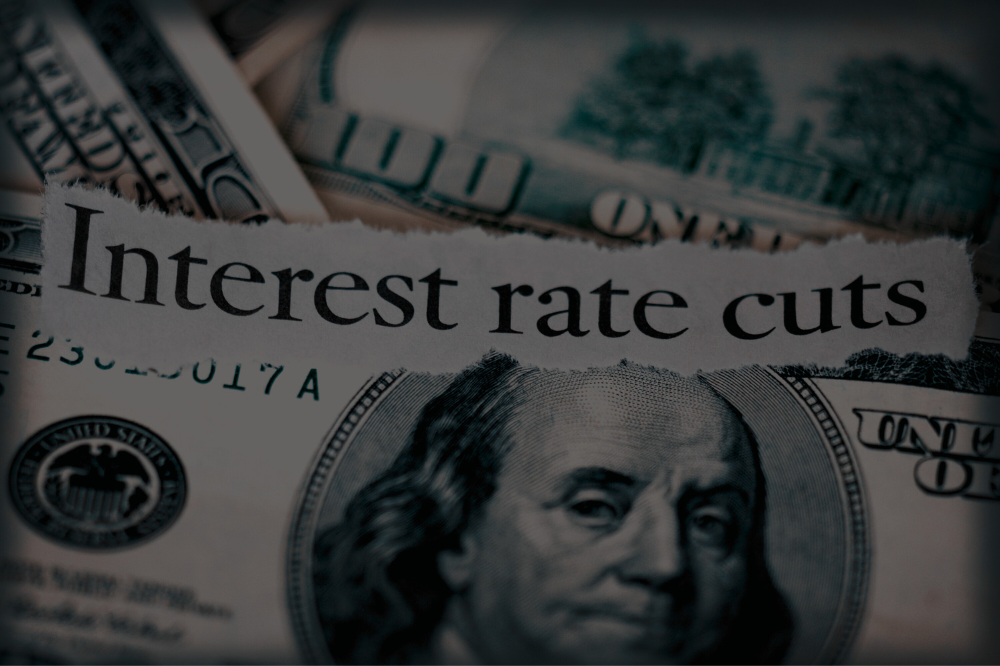As a Federal Reserve rate cut gets closer to reality, find out what things you should consider before it happens!
Last week, Federal Reserve Chair Jerome Powell hinted that an interest rate reduction might be on the horizon. During his keynote address at the Fed’s annual retreat in Jackson Hole, Wyoming, Powell stated, “the time has come for policy to adjust”. For many Americans burdened by high-interest rates, a potential quarter-point cut in September could offer some relief – especially if they prepare wisely.
“If you are a consumer, now is the time to say: ‘What does my spending look like? Where would my money grow the most and what options do I have?’”, said Leslie Tayne, an attorney specializing in debt relief at Tayne Law in New York and author of “Life & Debt”.
Currently, the federal funds rate is at a 20-year high, ranging from 5.25% to 5.50%. If the Fed reduces rates in September, it would be the first decrease in more than four years, following the cuts made during the onset of the COVID-19 pandemic when rates were nearly zero.
“From a consumer perspective, it’s important to note that lower interest rates will be a gradual process. The trip down is likely to be much slower than the series of interest rate hikes which quickly pushed the federal funds rate higher by 5.25 percentage points in 2022 and 2023”, said Ted Rossman, senior industry analyst at Bankrate.com.
Preparing for the Potential Federal Reserve Rate Cut
Plan to Pay Down Credit Card Debt
When the Fed cuts rates, the prime rate usually decreases as well, leading to lower interest rates on variable-rate debt like credit cards. This can reduce your monthly payments, but it may not be significant. Currently, the average interest rate on new credit cards is around 25%.
A quarter-point rate cut might save you $21 in total and help you pay off the balance one month sooner. “That’s not nothing, but it is far less than what you could save with a 0% balance transfer credit card”, said Matt Schulz, chief credit analyst at LendingTree. Instead of waiting, consider switching to a zero-interest balance transfer credit card or consolidating high-interest debt with a personal loan at a lower rate, Tayne suggested.
Lock in a High-Yield Savings Rate
With rates for savings accounts, money market accounts, and certificates of deposit (CDs) expected to decline, now is the time to lock in some of the highest returns seen in decades. Currently, top online savings accounts offer more than 5%, which is well above the inflation rate.
Once the Fed lowers its benchmark rate, these rates will likely drop. A typical saver with $8,000 in a regular account could earn an extra $200 annually by moving their money into a high-yield account that offers 2.5% or more, according to a Santander Bank survey. Alternatively, Greg McBride – chief financial analyst at Bankrate – advised locking in competitive CD rates now could yield better returns than waiting for potentially higher rates in the future.
Timing for Big Purchases
If you’re planning a large purchase, such as a home or car, waiting for lower interest rates could reduce financing costs. “Timing your purchase to coincide with lower rates can save money over the life of the loan”, Tayne noted.
Although mortgage rates are fixed and influenced by Treasury yields and economic conditions, they have already started to decline due to the prospect of an economic slowdown. According to Freddie Mac, the current average rate for a 30-year fixed-rate mortgage is just under 6.5%, which is down from a high of 7.22% in May.
However, if lower mortgage rates lead to increased homebuying demand, prices could rise, offsetting the benefits of lower rates, noted McBride. The housing market’s future will depend on how much mortgage rates decline and the supply of homes available.
Evaluate When to Refinance
If you have existing debt, refinancing could become a more viable option as rates decrease. Private student loans, for example, often have variable rates tied to indices like the prime rate or Treasury bills. As the Fed cuts rates, the interest rates on these loans may also decrease. Borrowers might eventually refinance variable-rate loans into fixed-rate ones with lower interest rates.
Currently, fixed rates on private refinances range from 5% to 11%. However, refinancing a federal loan into a private one means losing federal protections like income-driven repayment and loan forgiveness options. Additionally, extending the loan term could result in higher overall interest payments. David Peters, founder of Peters Professional Education, advised keeping your original payment amount after refinancing to pay off the principal faster without altering your cash flow.
Improve Your Credit Score
A good credit score can help you secure lower interest rates on loans. For example, auto loan rates have risen due to inflation, with the average five-year new car loan rate nearing 8%, according to Bankrate. Even a small reduction in rates could save money. A 0.25% decrease on a $35,000, five-year loan could reduce monthly payments by $4, McBride calculated. To get better loan terms, consumers should focus on paying down revolving debt and boosting their credit scores, which can also be beneficial across various financial situations, he suggested.

